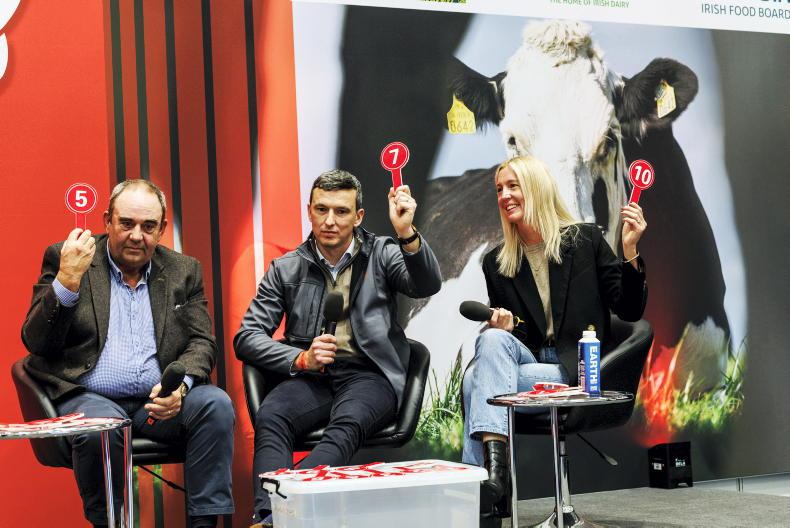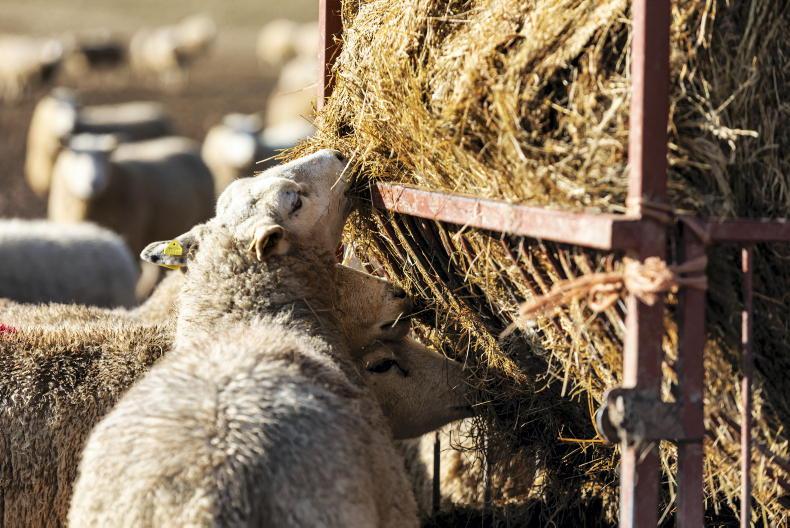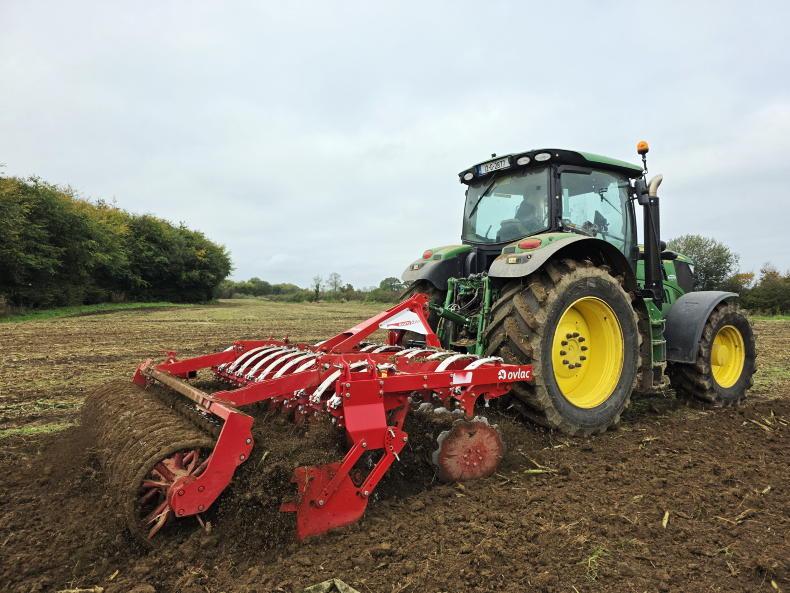For many farmers, reseeding grass swards in late summer and early autumn is preferable to spring time.
Taking a field out of circulation by reseeding in spring can put a heavily stocked farm under serious pressure if grass growth is falling short of livestock demand.
But in late summer, silage ground should be coming back in to the grazing rotation. This increases the area of land to carry livestock, making it easier to take a field out for reseeding.
The thing to keep in mind with reseeding in August and September is there is a time limit to getting the job complete.
Reseeding too late can result in poor germination, leaving seedling plants that are more susceptible to frost damage during winter.
When it comes to autumn reseeding, outlined are a series of tips to help increase the chances of getting a new sward successfully established.
1. Is there a target date to complete an autumn reseed?
The earlier reseeding is carried out the better as this gives more time for new grass to establish ahead of winter. It will also increase the window for getting a post-emergence spray applied.
It is a race against time with autumn reseeding and weather conditions will be a big factor in getting the task completed.
On heavier soils or north facing land, grass seed should be in the ground by the first week of September.
On drier, lowland ground with a south facing aspect, target mid-September as the cut-off point for autumn reseeding.
2. Do I need to burn off the existing sward?
Burning off the existing sward is recommended when reseeding, especially when using a stitching method to establish new grass.
However, it lengthens the whole process. Once the existing sward has been sprayed, leave 10 to 12 days to allow old grasses die back.
If there are a lot of docks presents, leave at least 14 days after spraying as these weeds have deeper tap roots and the extra time gives better control.
Mob grazing with cattle or sheep before reseeding will reduce the amount of trash to bury with the plough.
It also leaves a cleaner sward base for stitching in and reduces the chances of grass seedlings being smothered by trash.
From spraying until the ploughing or stitching stage will be at least two weeks. So if you burn off an old sward over the next week, it will be mid-August before you are ready to plough or stitch in grass.
3. Should I take soil samples?
If the sward marked for reseeding has been grazed all summer, there is little point in soil sampling now. The waste excreted by livestock and fertiliser dressings will distort the results.
However, work to the principle that soil is low in lime, phosphate (P) and potash (K) to get grass established. Soil samples can be taken this winter.
Apply 1t to 2t/acre of lime and plough in some farmyard manure or slurry. If stitching in grass, lime is recommended as the dead grass can make the seed bed acidic.
A granular product will give an instant neutralising effect to improve germination, but a follow up dressing of ground lime should be applied for a longer lasting effect.
P and K can be applied with a watery slurry dressing before reseeding, or a chemical fertiliser afterwards.
Alternatively, if silage fields are being reseeded straight after cutting, there is a window to take soil samples before any fertiliser is applied.
4. Fix drainage and compaction issues
If fields have a tendency to hold surface water, check that existing drains are working or if new drains are required. Ploughing will open the soil and naturally increase drainage.
If reseeding with a stitching machine, use a sub-soiler or pan buster to relieve compaction and improve soil aeration.
Also, take the opportunity when reseeding to relocate drinking troughs to more practical locations that service multiple paddocks for rotational grazing.
5. What are the merits of a ploughed reseed?
Ploughing will open the soil and naturally relieve compaction, improve aeration and drainage. Once cultivated, it leaves a level seed bed and greater soil to seed contact for better germination.
But on the downside, it takes longer to carry out the whole process. If the weather breaks after ploughing, reseeding can be greatly delayed.
The seed bed is also softer after ploughing, limiting the options for grazing in early autumn.
Deep ploughing in a field that is rarely reseeded will turn the fertile soil down and bring up poorer soils, as well as disturbing the seed bank of weeds.
6. What are the merits of stitching in grass?
Stitching in new grass is much faster than ploughing and less prone to weather delays. There is also less cultivation required, making it cheaper than a ploughed reseed.
As the seed bed is not disturbed, soils are better able to carry livestock after reseeding and weeds are less of an issue.
On the downside, as the old sward dies back, it will need grazing off before stitching in. Soil contact will also be increased by discing or harrowing before stitching.
Once seedlings have established, it is important to keep old grasses from coming back with short, light grazings.
Most grass seed is sold in pre-mixed packs, but custom mixes can be made up. If swards will be continually grazed, choose diploid grasses with late heading dates and good early and autumn growth.
For silage swards in a multiple cutting system, go for late heading tetraploid grasses. Timothy is recommended for heavier soils.
8. Clover and multispecies swards
Include white clover on grazing swards at a rate of 1kg to 2kg/acre. Choose small leaf varieties for sheep and medium to large varieties for cattle and silage.
For red clover, sow at a rate of 3kg/acre and use on silage ground only. Clover seeds are small, so drill clover to a maximum depth of 10mm.
If the aim is for a high clover sward, reseeding should be completed before the end of August. The same goes with a multi-species swards (MSS).
When choosing a multispecies mix, there is little point going for more than six varieties. Choose a mix with ryegrass, red and white clover and two herbs.
If a high clover sward is not the primary aim, then a post-emergence spray will control weeds. Keep in mind that the later the reseed, the smaller the window for spraying weeds in autumn.
But if clover or a MSS is the goal, then do not spray weeds. Weeds are less problematic in autumn compared to spring. Using sheep or weanlings for grazing will help keep weeds under control.
The alternative for weed control is to plough and leave a stale seed bed before reseeding, but this extends the process by another two to three weeks, making it less practical.
10. When is it safe to graze a reseed?
Ideally, an autumn reseed should be grazed once before closing off for winter. But this will depend on the weather.
To check if a reseed is ready for grazing, grab a few plants between the thumb and index finger, then pull with medium pressure. If the seedlings remain anchored in the ground, it will withstand grazing.
Weanling cattle, dry ewes and lambs are ideal for grazing reseeds as they are lighter and will cause less surface damage.
Read more
This week in photos - harvest, hay and the Farm Machinery Show
Dutch dairy farmers ‘shocked’ at how far nitrogen reduction plans go
For many farmers, reseeding grass swards in late summer and early autumn is preferable to spring time.
Taking a field out of circulation by reseeding in spring can put a heavily stocked farm under serious pressure if grass growth is falling short of livestock demand.
But in late summer, silage ground should be coming back in to the grazing rotation. This increases the area of land to carry livestock, making it easier to take a field out for reseeding.
The thing to keep in mind with reseeding in August and September is there is a time limit to getting the job complete.
Reseeding too late can result in poor germination, leaving seedling plants that are more susceptible to frost damage during winter.
When it comes to autumn reseeding, outlined are a series of tips to help increase the chances of getting a new sward successfully established.
1. Is there a target date to complete an autumn reseed?
The earlier reseeding is carried out the better as this gives more time for new grass to establish ahead of winter. It will also increase the window for getting a post-emergence spray applied.
It is a race against time with autumn reseeding and weather conditions will be a big factor in getting the task completed.
On heavier soils or north facing land, grass seed should be in the ground by the first week of September.
On drier, lowland ground with a south facing aspect, target mid-September as the cut-off point for autumn reseeding.
2. Do I need to burn off the existing sward?
Burning off the existing sward is recommended when reseeding, especially when using a stitching method to establish new grass.
However, it lengthens the whole process. Once the existing sward has been sprayed, leave 10 to 12 days to allow old grasses die back.
If there are a lot of docks presents, leave at least 14 days after spraying as these weeds have deeper tap roots and the extra time gives better control.
Mob grazing with cattle or sheep before reseeding will reduce the amount of trash to bury with the plough.
It also leaves a cleaner sward base for stitching in and reduces the chances of grass seedlings being smothered by trash.
From spraying until the ploughing or stitching stage will be at least two weeks. So if you burn off an old sward over the next week, it will be mid-August before you are ready to plough or stitch in grass.
3. Should I take soil samples?
If the sward marked for reseeding has been grazed all summer, there is little point in soil sampling now. The waste excreted by livestock and fertiliser dressings will distort the results.
However, work to the principle that soil is low in lime, phosphate (P) and potash (K) to get grass established. Soil samples can be taken this winter.
Apply 1t to 2t/acre of lime and plough in some farmyard manure or slurry. If stitching in grass, lime is recommended as the dead grass can make the seed bed acidic.
A granular product will give an instant neutralising effect to improve germination, but a follow up dressing of ground lime should be applied for a longer lasting effect.
P and K can be applied with a watery slurry dressing before reseeding, or a chemical fertiliser afterwards.
Alternatively, if silage fields are being reseeded straight after cutting, there is a window to take soil samples before any fertiliser is applied.
4. Fix drainage and compaction issues
If fields have a tendency to hold surface water, check that existing drains are working or if new drains are required. Ploughing will open the soil and naturally increase drainage.
If reseeding with a stitching machine, use a sub-soiler or pan buster to relieve compaction and improve soil aeration.
Also, take the opportunity when reseeding to relocate drinking troughs to more practical locations that service multiple paddocks for rotational grazing.
5. What are the merits of a ploughed reseed?
Ploughing will open the soil and naturally relieve compaction, improve aeration and drainage. Once cultivated, it leaves a level seed bed and greater soil to seed contact for better germination.
But on the downside, it takes longer to carry out the whole process. If the weather breaks after ploughing, reseeding can be greatly delayed.
The seed bed is also softer after ploughing, limiting the options for grazing in early autumn.
Deep ploughing in a field that is rarely reseeded will turn the fertile soil down and bring up poorer soils, as well as disturbing the seed bank of weeds.
6. What are the merits of stitching in grass?
Stitching in new grass is much faster than ploughing and less prone to weather delays. There is also less cultivation required, making it cheaper than a ploughed reseed.
As the seed bed is not disturbed, soils are better able to carry livestock after reseeding and weeds are less of an issue.
On the downside, as the old sward dies back, it will need grazing off before stitching in. Soil contact will also be increased by discing or harrowing before stitching.
Once seedlings have established, it is important to keep old grasses from coming back with short, light grazings.
Most grass seed is sold in pre-mixed packs, but custom mixes can be made up. If swards will be continually grazed, choose diploid grasses with late heading dates and good early and autumn growth.
For silage swards in a multiple cutting system, go for late heading tetraploid grasses. Timothy is recommended for heavier soils.
8. Clover and multispecies swards
Include white clover on grazing swards at a rate of 1kg to 2kg/acre. Choose small leaf varieties for sheep and medium to large varieties for cattle and silage.
For red clover, sow at a rate of 3kg/acre and use on silage ground only. Clover seeds are small, so drill clover to a maximum depth of 10mm.
If the aim is for a high clover sward, reseeding should be completed before the end of August. The same goes with a multi-species swards (MSS).
When choosing a multispecies mix, there is little point going for more than six varieties. Choose a mix with ryegrass, red and white clover and two herbs.
If a high clover sward is not the primary aim, then a post-emergence spray will control weeds. Keep in mind that the later the reseed, the smaller the window for spraying weeds in autumn.
But if clover or a MSS is the goal, then do not spray weeds. Weeds are less problematic in autumn compared to spring. Using sheep or weanlings for grazing will help keep weeds under control.
The alternative for weed control is to plough and leave a stale seed bed before reseeding, but this extends the process by another two to three weeks, making it less practical.
10. When is it safe to graze a reseed?
Ideally, an autumn reseed should be grazed once before closing off for winter. But this will depend on the weather.
To check if a reseed is ready for grazing, grab a few plants between the thumb and index finger, then pull with medium pressure. If the seedlings remain anchored in the ground, it will withstand grazing.
Weanling cattle, dry ewes and lambs are ideal for grazing reseeds as they are lighter and will cause less surface damage.
Read more
This week in photos - harvest, hay and the Farm Machinery Show
Dutch dairy farmers ‘shocked’ at how far nitrogen reduction plans go










SHARING OPTIONS